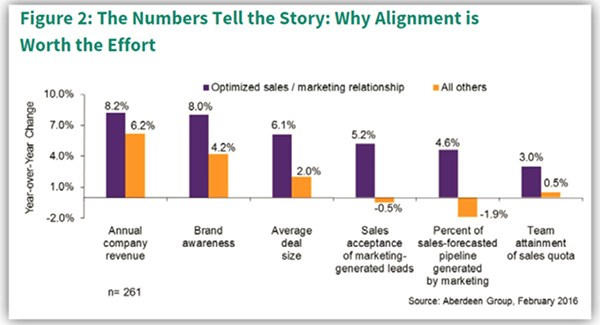Some time ago, CEB released data that showed the typical B2B buyer is already 57% through the purchase process before reaching out to sales. Since that data was published other sources have estimated that number to be as high as 75% or more. Additionally, the average number of decision-makers in a buying group continues to increase and is now estimated at 6 to 10 people.
Many sales professionals and leaders perceive that these changes in the buying process are making it increasingly difficult to consistently hit revenue targets in B2B. I, however, see this as an opportunity for forward-thinking sales leaders to better align with their marketing colleagues to dominate the space where prospects are spending the majority of their time.
While many sales organizations are only focused on aggressively bombarding prospects during the last 43% of the buyer’s journey (which has become extremely annoying and ineffective), there exists a significant opportunity to get in front of customers before they enter the “buying window.” This period is critical because it is when most buyers start to figure out what they need, want, and desire regardless of the actual product or solution.
To make your product stick in the mind of the buyer, sales and marketing leaders need to approach them together during this period of the purchasing process before the buyer reaches out to sales. The goal of this outreach and content should be to generate higher-value conversations with prospects. This outreach should focus on helping decision-makers clearly identify their business problem and develop a vision for how they will go about solving it. This conversation should not focus on product features and benefits, but on shaping the way the prospect sees their business issue and views potential solutions.
PLAY WHERE THERE IS LESS COMPETITION
RAIN Group released research that specifically addresses the myth that buyers don’t want to hear from sellers early in the decision-making process. In fact, their study shows that 71% of buyers want to speak with sellers when they are exploring new ideas to improve business results.
The problem that most buyers find is that the early stages of the buying process are extremely difficult, confusing, and frustrating. This is because there is too much information — The Paradox of Choice. This overwhelming amount of information from sellers and other sources actually impedes the buyer in identifying which types of solutions they should pursue and ultimately makes the buying process much longer.
But what if B2B companies could help buyers navigate all this information and give them clarity about how to accurately assess their business problem and evaluate potential solutions? This kind of useful information would be a game-changer for the buyer and a winning strategy for the seller. What’s the best way to achieve that at scale? Aligning with marketing.


















